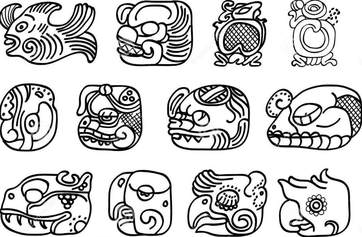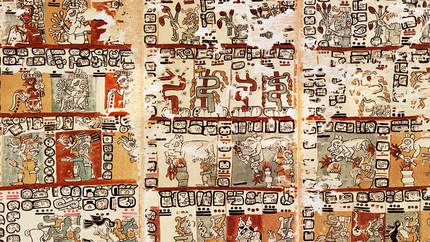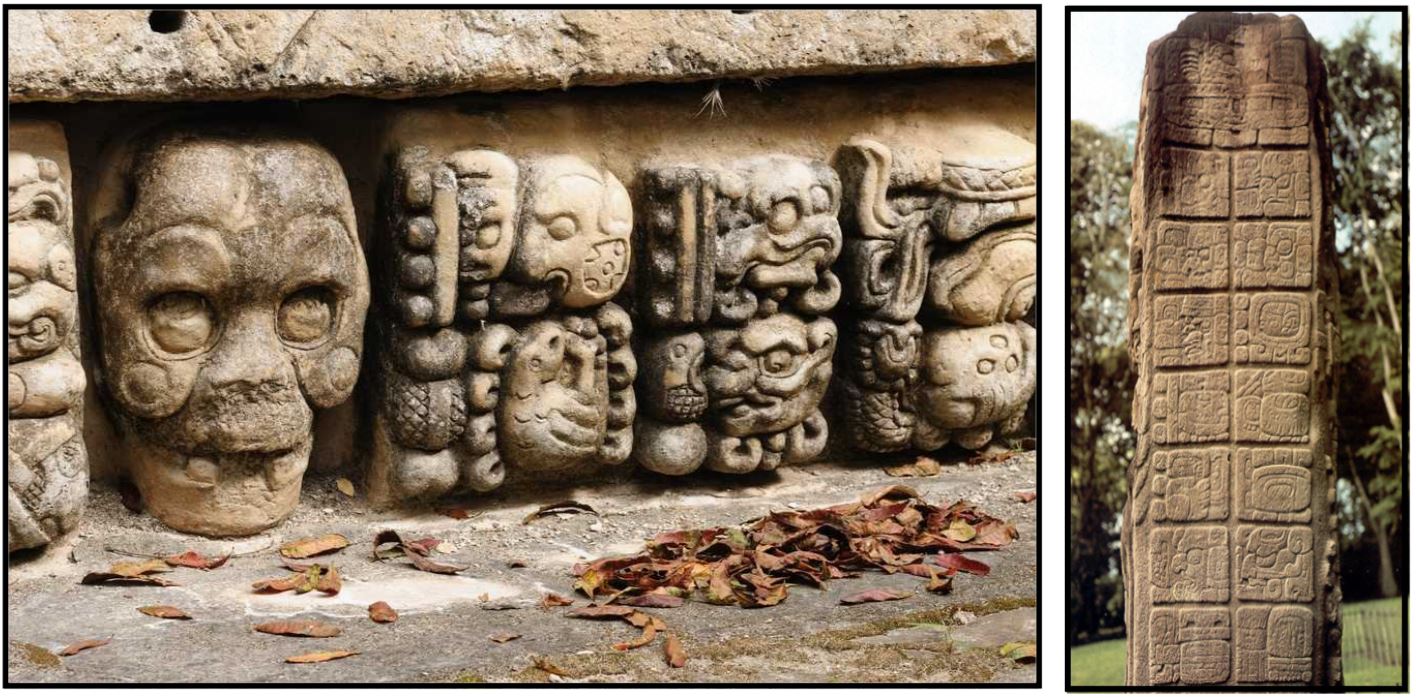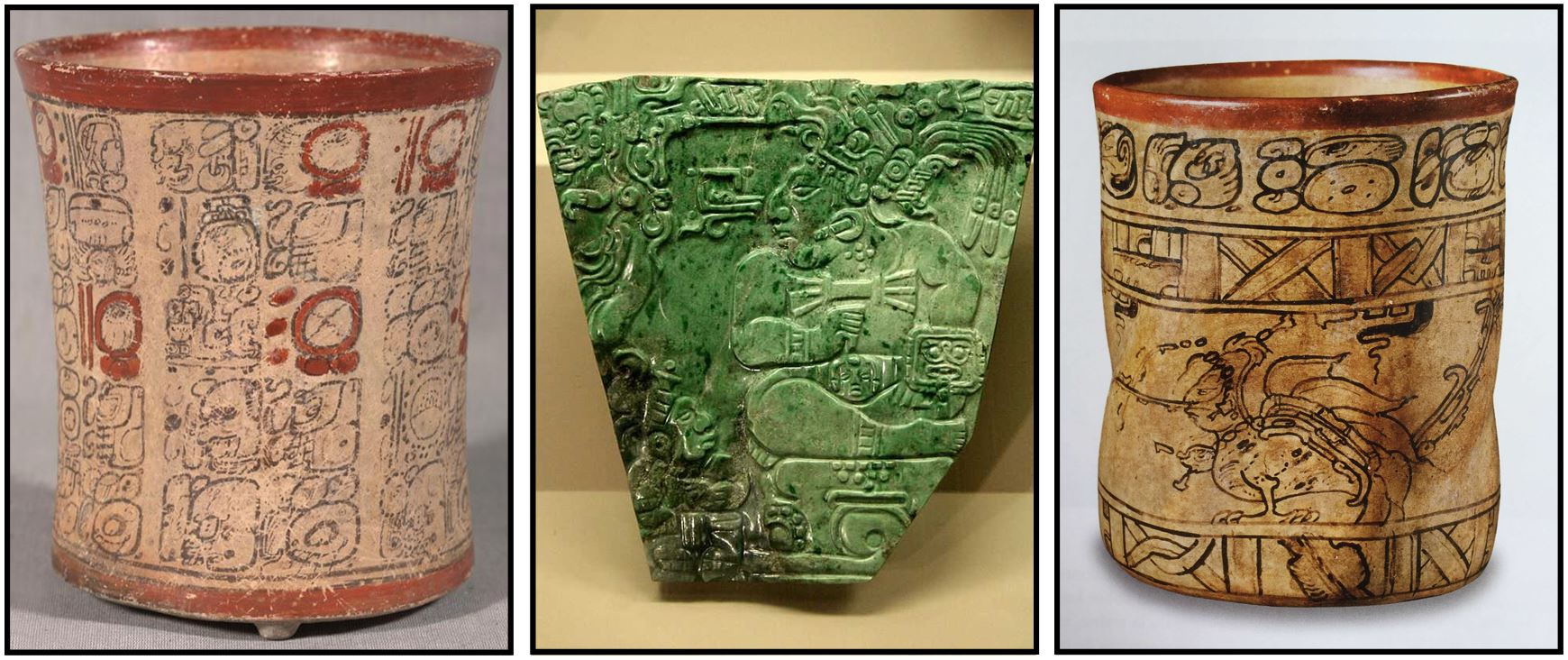Maya Writing
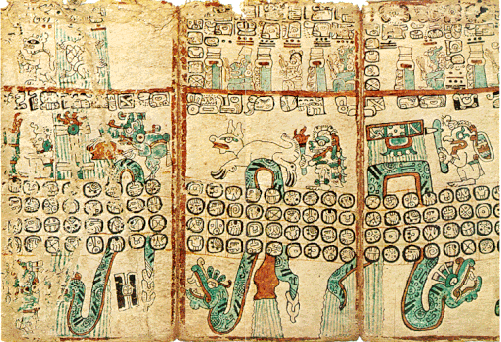
Essential Themes
Culture: How do we know what we know about human history?
Culture: How do we know what we know about human history?
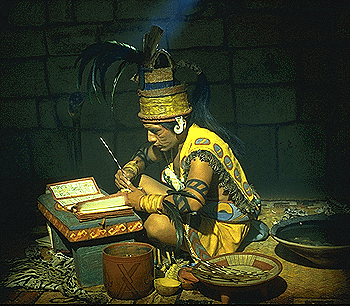
From your lessons, you should remember that there are 5 traits of civilization. Those traits include specialized workers, complex institutions, advanced technology, record keeping, and advanced cities. In your last lesson on the Maya, you learned a bit about their cities. In this lesson, you will look at their writing, or record keeping system.
RECORD KEEPING
Record keeping was an important part of Maya culture. In fact, Maya culture depended on it. Record keeping was essential to their farming, astronomy and prophecy. By keeping records of the rainy and dry seasons, the Maya could determine the best times to plant and harvest their crops. By recording the movements of the sky deities (the sun, the moon, the planets, and the stars), they developed accurate calendars that they used for prophecy.
In order to keep long-term records, not only did the ancient Maya develop their own, unique system of record keeping, the Maya invented the most advanced system of writing in the ancient Americas. The system they used was a form of hieroglyphics. Hieroglyphics use pictures to represent objects, sounds and groups of sounds. In the beginning, Maya hieroglyphics used pictures of birds and animals. Soon, however, they developed a unique style all their own.
RECORD KEEPING
Record keeping was an important part of Maya culture. In fact, Maya culture depended on it. Record keeping was essential to their farming, astronomy and prophecy. By keeping records of the rainy and dry seasons, the Maya could determine the best times to plant and harvest their crops. By recording the movements of the sky deities (the sun, the moon, the planets, and the stars), they developed accurate calendars that they used for prophecy.
In order to keep long-term records, not only did the ancient Maya develop their own, unique system of record keeping, the Maya invented the most advanced system of writing in the ancient Americas. The system they used was a form of hieroglyphics. Hieroglyphics use pictures to represent objects, sounds and groups of sounds. In the beginning, Maya hieroglyphics used pictures of birds and animals. Soon, however, they developed a unique style all their own.
Maya writing evolved from symbolic pictures of birds and other animals to a much more complex form. Like Egyptian hieroglyphics, Maya hieroglyphics were both written and carved.
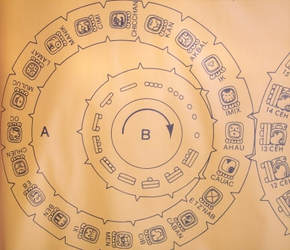
With long-term records, the Maya were able to predict planetary cycles, the phases of the moon, and even eclipses. That knowledge was used to determine when their gods would be in positions to favor a variety of activities such as holding ceremonies, inaugurating kings, starting a new trading expedition, or waging wars.
BRAINBOX: Why is a calendar important?
While the Maya used their unique writing to record their history - including their mythology and the actions of their kings - on stelae, on buildings, and in codices (the plural of codex, which means book), one of the most important uses for their hieroglyphics was their calendar. While you may have heard about the "Maya calendar," the Maya actually had three calendars that worked together like gears spinning in a great machine. The three calendars used by the Maya marked sacred events, as well as civic , mythological, and historical ones.
BRAINBOX: Why is a calendar important?
While the Maya used their unique writing to record their history - including their mythology and the actions of their kings - on stelae, on buildings, and in codices (the plural of codex, which means book), one of the most important uses for their hieroglyphics was their calendar. While you may have heard about the "Maya calendar," the Maya actually had three calendars that worked together like gears spinning in a great machine. The three calendars used by the Maya marked sacred events, as well as civic , mythological, and historical ones.
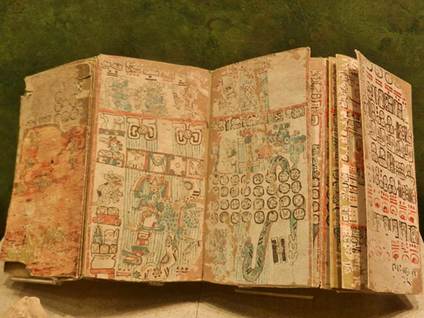 Maya books were filled with art as well as stories about their gods.
Maya books were filled with art as well as stories about their gods.
Why do so few Maya books remain?
MAYA HIEROGLYHPICS
The writing system the Maya invented was quite complex. It used about 800 symbols or glyphs. A glyph is a picture or a symbol that is used to represent a sound, a word, or perhaps a syllable. The word, hiero, comes from the Greek and means “sacred.” So, hieroglyphics basically means “sacred writing.”
The world of the Maya is one that is filled with demons, devils, gods, and ancestors, so it’s no wonder that the Maya wrote quite a lot about their gods. However, they also left records of their leaders, their daily life, and their special events. Maya books were not like the books we have today. The books that the Maya created were made of soft tree bark. The Maya treated the bark with lime to whiten the page and make it more smooth. Then, they folded the pages like a fan. The reader had to unfold them to read them. Maya text is written in paired vertical columns and read left to right and top to bottom. Maya books included illustrations and artwork, as well as glyphs. These books are called codices. A single book is called a codex.
Because the natural material on which the Maya wrote did not hold up well in the humid rainforest environment, it would have been difficult to preserve such tender texts. Most of those that did survive were destroyed by the Spanish when they arrived in the 16th century. Because the first Spanish to the area destroyed so many Maya codices, only 4 in the world remain.
Fortunately, the Maya also covered their stelae with hieroglyphics. The Maya city of Copan has numerous great examples of stelae with hieroglyphics. The Maya also used hieroglyphics on temple walls and pillars, and they have been found carved into wood and jade, as well as painted onto ceramics. Although the Maya wrote everything down, until very, very recently interpreting their writing remained a mystery.
MAYA HIEROGLYHPICS
The writing system the Maya invented was quite complex. It used about 800 symbols or glyphs. A glyph is a picture or a symbol that is used to represent a sound, a word, or perhaps a syllable. The word, hiero, comes from the Greek and means “sacred.” So, hieroglyphics basically means “sacred writing.”
The world of the Maya is one that is filled with demons, devils, gods, and ancestors, so it’s no wonder that the Maya wrote quite a lot about their gods. However, they also left records of their leaders, their daily life, and their special events. Maya books were not like the books we have today. The books that the Maya created were made of soft tree bark. The Maya treated the bark with lime to whiten the page and make it more smooth. Then, they folded the pages like a fan. The reader had to unfold them to read them. Maya text is written in paired vertical columns and read left to right and top to bottom. Maya books included illustrations and artwork, as well as glyphs. These books are called codices. A single book is called a codex.
Because the natural material on which the Maya wrote did not hold up well in the humid rainforest environment, it would have been difficult to preserve such tender texts. Most of those that did survive were destroyed by the Spanish when they arrived in the 16th century. Because the first Spanish to the area destroyed so many Maya codices, only 4 in the world remain.
Fortunately, the Maya also covered their stelae with hieroglyphics. The Maya city of Copan has numerous great examples of stelae with hieroglyphics. The Maya also used hieroglyphics on temple walls and pillars, and they have been found carved into wood and jade, as well as painted onto ceramics. Although the Maya wrote everything down, until very, very recently interpreting their writing remained a mystery.
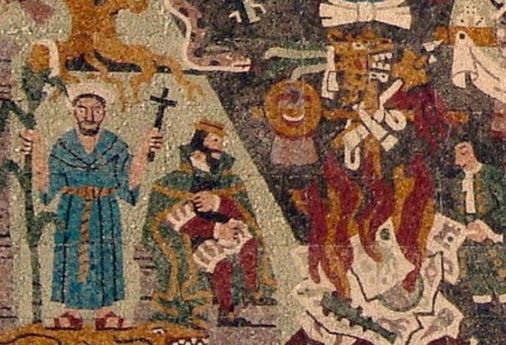 Above is a mosaic depicting Bishop Diego de Landa burning the books of the Maya.
Above is a mosaic depicting Bishop Diego de Landa burning the books of the Maya.
UNDERSTANDING MAYA HIEROGLYPHICS
When the Spanish arrived about 600 years after the Maya civilization had disappeared, they found many Maya codices. Unfortunately, the first Bishop of Yucatan - the Spanish priest, Diego de Landa - believed the books to be filled with pictures of demons and devils. As a result, he set about burning all of the books that could be found. Much was destroyed but, fortunately, not everything.
Even though Bishop Landa was set on destroying all the Maya books that he could find, he also created the first alphabetic translation of Maya hieroglyphics. When he was writing a book about his life in the Yucatan, he included a very sketchy "summary" of Maya hieroglyphics. Apparently, de Landa assumed that the Maya, like the Spanish, wrote with an alphabet. When he asked his Maya translators how to write "a", "b", "c", and so forth, in Maya, the translators heard the syllables "ah", "beh", "seh" (as "a", "b," "c"... would be pronounced in Spanish). Naturally, the translators gave the glyphs with those phonetic values. So, in an ironic way, the man who wanted to destroy Maya books gave later scholars the first clues to deciphering Maya text. The de Landa alphabet, as it is known, became the Rosetta Stone for understanding Maya hieroglyphics.
When the Spanish arrived about 600 years after the Maya civilization had disappeared, they found many Maya codices. Unfortunately, the first Bishop of Yucatan - the Spanish priest, Diego de Landa - believed the books to be filled with pictures of demons and devils. As a result, he set about burning all of the books that could be found. Much was destroyed but, fortunately, not everything.
Even though Bishop Landa was set on destroying all the Maya books that he could find, he also created the first alphabetic translation of Maya hieroglyphics. When he was writing a book about his life in the Yucatan, he included a very sketchy "summary" of Maya hieroglyphics. Apparently, de Landa assumed that the Maya, like the Spanish, wrote with an alphabet. When he asked his Maya translators how to write "a", "b", "c", and so forth, in Maya, the translators heard the syllables "ah", "beh", "seh" (as "a", "b," "c"... would be pronounced in Spanish). Naturally, the translators gave the glyphs with those phonetic values. So, in an ironic way, the man who wanted to destroy Maya books gave later scholars the first clues to deciphering Maya text. The de Landa alphabet, as it is known, became the Rosetta Stone for understanding Maya hieroglyphics.
|
|
Deciphering Maya texts has become easier with the aid of computers and the knowledge gathered during scientific investigations over the last hundred years. So far, nearly 85 percent of known Maya hieroglyphics have been decoded. These writings have told us a great deal about the religion, government, and daily life of the ancient Maya. For me, at least, they also give me a deeper appreciation for the ingenuity of the ancient Maya.
|

